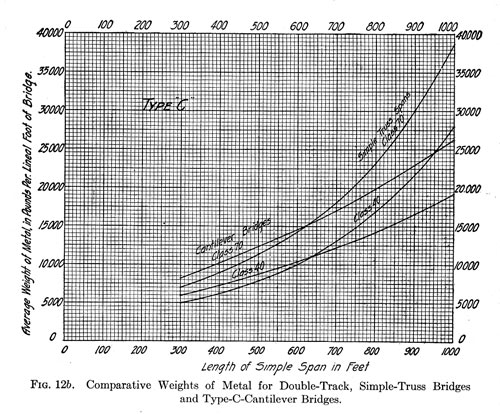| 86 | ECONOMICS OF BRIDGEWORK | Chapter XII |
|
is ever going to build any of them of long-enough span to bring up the question, because such expensive structures would surely be constructed to accommodate highway traffic also. The type of cantilever under discussion (Type C of Fig. 12a) is not well adapted to crossings where falsework cannot be employed; and the use of the simple-span layout, in which the center span can be cantilevered out from the side ones, is frquently preferable on this account. Also the adoption of the three duplicate spans or even the duplicate side spans will
usually cause a small reduction in the pound price of the manufactured metal, as compared with that for the cantilever. The cantilever layout denominated Type A in Fig. 12a is the most common of the four types illustrated. It is generally used for a long-span structure where the length of the central openings is fixed, while the lengths of the end spans can be made much shorter. Also, it is more likely to be adopted where the central span cannot be erected on falsework. For these reasons it cannot fairly be contrasted with a simple-truss, equal-span layout, nor with the Type-C cantilever. It may very properly, though, be pitted against a simple-truss layout with unequal spans—in fact the same spans as the cantilever layout has. Fig. 12c gives curves of weights for such layouts, for pin-connected, double-track, steam-railway |
